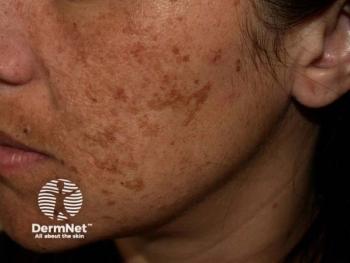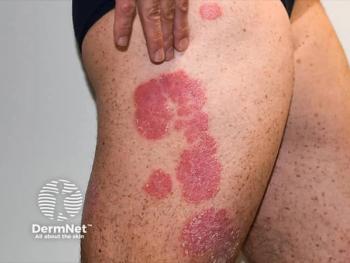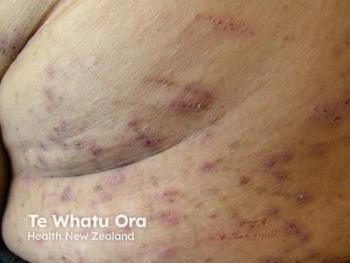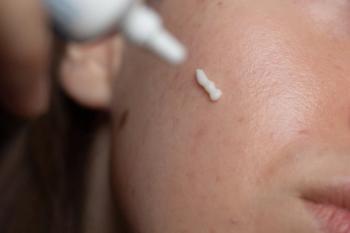
Researchers Define 4 Subtypes of Hand Vitiligo
Key Takeaways
- NSV hand lesions exhibit strong bilateral symmetry, with the dominant hand showing more severe involvement, likely due to mechanical stress.
- Four lesion subtypes were identified: focal/scattered, distal digit, universal, and proximal digit, each with distinct characteristics and treatment responses.
A recent study reveals distinct patterns of nonsegmental vitiligo lesions on hands.
Vitiligo remains one of the most psychologically burdensome dermatological conditions, particularly when affecting exposed anatomical regions such as the hands.1 This chronic autoimmune disease is marked by the selective destruction of melanocytes and is broadly classified into segmental vitiligo (SV) and nonsegmental vitiligo (NSV). NSV, the more prevalent subtype, often presents symmetrically, but the distribution of lesions in acral regions—including the hands and fingers—has remained poorly characterized.2
A recent retrospective study sought to better define the clinical behavior of NSV lesions affecting the hands.3 Using photographic and medical records from 140 patients seen over a 10-year period at the University of Osaka Hospital, the study employed cluster analysis to classify lesion patterns and explore potential influencing factors, including dominant hand usage and smoking history. The study aimed to uncover whether acral lesions appear in predictable patterns, respond differently to treatment, or are impacted by environmental and lifestyle factors.
Distribution Patterns and Dominance-Associated Asymmetry
Consistent with existing literature, the study found that hand lesions in NSV demonstrate strong bilateral symmetry (R² = 0.9319), but the dominant hand—mostly the right hand in this cohort—tended to show more severe involvement. This finding aligns with the proposed role of the Koebner phenomenon, wherein mechanical stress from frequent hand use may trigger or exacerbate vitiligo lesions. The distal digits were particularly vulnerable, with significantly higher involvement than the proximal fingers or dorsal hands, suggesting anatomical and physiological susceptibility in these regions.
Cluster Classification of Hand Lesions
Using hierarchical clustering, hand lesions were categorized into 4 subtypes: focal/scattered (46.4%), distal digit (31.4%), universal (12.9%), and proximal digit (9.2%). The focal/scattered type was most common, especially in children, whereas the distal digit pattern—marked by periungual involvement—emerged as a distinct and diagnostically useful subtype. The universal subtype exhibited widespread dorsal hand involvement, poor treatment response, and frequent signs of disease activity. The proximal digit pattern, though least common, demonstrated unique characteristics with a higher frequency of dorsal hand involvement and earlier onset.
Smoking, Age, and Disease Progression
The study explored the role of smoking in lesion severity. Smokers exhibited significantly higher distal digit scores in a univariate analysis; however, after adjustment for confounders through multivariate ANCOVA and LASSO regression, smoking was not an independent predictor. Instead, disease duration emerged as the strongest predictor of lesion severity. Notably, stratified analyses showed a significant association between smoking and distal digit involvement in patients younger than 56 years, suggesting that age-related immune modulation may influence susceptibility.
Clinical Course and Treatment Implications
Follow-up data from 86 patients revealed progressive spreading of lesions, especially to the distal digits and interdigital areas, over an average of 2.3 years. Importantly, researchers noted lesions on the digits showed more deterioration compared with the nondigital hand areas. Treatment strategies used during follow-up were heterogeneous, reflecting real-world practices including topical corticosteroids, calcineurin inhibitors, phototherapy, and systemic corticosteroids. However, overall responsiveness of hand lesions—especially those on the digits—remained poor, consistent with existing literature that places acral sites among the least responsive to conventional treatment.
Potential Immunological and Anatomical Mechanisms
Emerging evidence suggests that anatomical differences, such as fibroblast-derived chemokine signaling and localized immune activation, may contribute to site-specific responses. Fibroblasts from dorsal hands may actively recruit cytotoxic CD8+ T cells, the study noted, sustaining inflammation and impeding repigmentation. Moreover, CD49a+ tissue-resident memory T cells may resist immunosuppressive therapy, contributing to disease persistence in acral regions.
Limitations and Future Directions
The study's retrospective, single-center design and limited sample sizes for certain subgroups restrict generalizability. Lack of standardized treatment protocols and incomplete data on smoking status further limit conclusions. However, researchers felt the proposed classification system of hand vitiligo subtypes offers a framework for future prospective studies and therapeutic stratification.
Conclusion
This study provides important insights into the anatomical distribution and clinical behavior of hand vitiligo in patients with NSV. By identifying distinct distribution subtypes and their association with disease progression, dominance, and environmental factors, the research underscores the importance of individualized treatment approaches. Recognizing these subtypes may help refine prognosis, guide therapeutic decisions, and identify patients who may benefit from emerging therapies, including JAK inhibitors and targeted phototherapy. Researchers stated that future multicenter and longitudinal studies are warranted to validate these findings and optimize care for patients affected by this difficult-to-treat manifestation of vitiligo.
References
- Akl J, Lee S, Ju HJ, et al. Estimating the burden of vitiligo: a systematic review and modelling study. Lancet Public Health. 2024;9(6):e386-e396. doi:10.1016/S2468-2667(24)00026-4
- Krüger C, Schallreuter KU. A review of the worldwide prevalence of vitiligo in children/adolescents and adults. Int J Dermatol. 2012;51(10):1206-1212. doi:10.1111/j.1365-4632.2011.05377.x
- Yokoi K, Ishitsuka Y, Kusao K, et al. The proposed categorization of vitiligo lesions on the hands. Pigment Cell Melanoma Res. 2025;38(4):e70039. doi:10.1111/pcmr.70039
Newsletter
Like what you’re reading? Subscribe to Dermatology Times for weekly updates on therapies, innovations, and real-world practice tips.


















